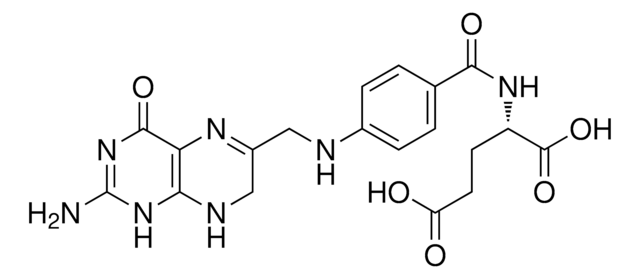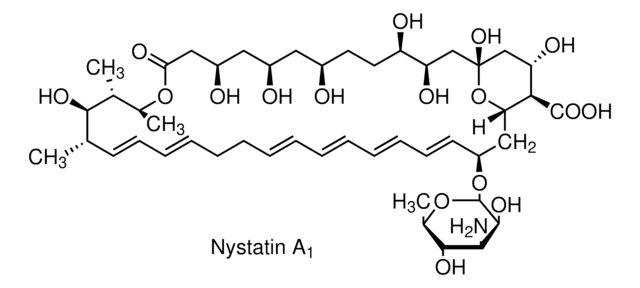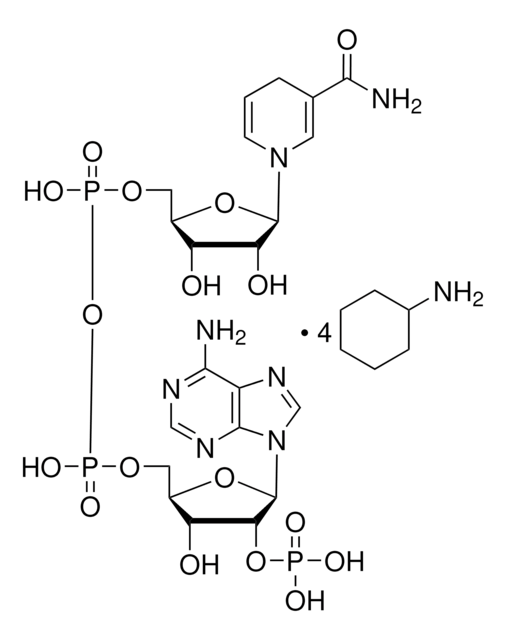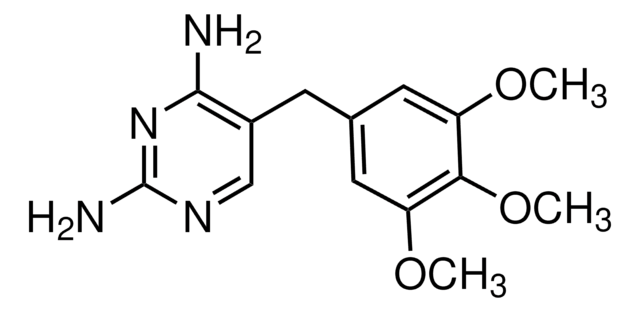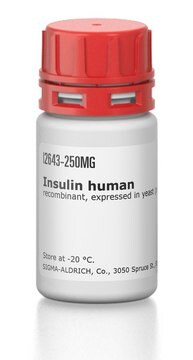D6566
Dihydrofolate Reductase human
≥80% (SDS-PAGE), recombinant, expressed in E. coli, ≥1 units/mg protein
Sinónimos:
DHFR, Tetrahydrofolate NADP+ oxidoreductase
About This Item
Productos recomendados
recombinant
expressed in E. coli
Quality Level
assay
≥80% (SDS-PAGE)
form
solution
specific activity
≥1 units/mg protein
mol wt
25 kDa
concentration
0.02-0.06 mg/mL
UniProt accession no.
shipped in
wet ice
storage temp.
−20°C
Gene Information
human ... DHFR(1719)
General description
Application
- to investigate the stable expression of green fluorescent protein and the targeted disruption of thioredoxin peroxidase-1 gene in Babesia bovis
- to study the structural analysis of human dihydrofolate reductase as a binary complex
- to study its in vitro kinetic assay for the enzyme inhibition study
Biochem/physiol Actions
NADPH 0.16 mM
7,8-dihydrofolate 0.03 mM
8-methylpterin 0.13 mM
Ki7
Folate 2.6x10-5 mM
Methotrexate 6.1-9x10-9
Unit Definition
Physical form
substrate
Storage Class
12 - Non Combustible Liquids
wgk_germany
WGK 1
flash_point_f
Not applicable
flash_point_c
Not applicable
ppe
Eyeshields, Gloves, multi-purpose combination respirator cartridge (US)
Elija entre una de las versiones más recientes:
¿Ya tiene este producto?
Encuentre la documentación para los productos que ha comprado recientemente en la Biblioteca de documentos.
Los clientes también vieron
Artículos
This article reviews some of our newest and most innovative technologies and their specific applications toward cancer research. It describes how complex the disease of cancer is, and how difficult it is to identify one topic that is completely unrelated to any other.
This issue of Biofiles reviews some of our newest and most innovative technologies and their specific applications toward cancer research. In preparing this issue of Biofiles, one is reminded how complex the disease of cancer is, and how difficult it is to identify one topic that is completely unrelated to any other.
Nuestro equipo de científicos tiene experiencia en todas las áreas de investigación: Ciencias de la vida, Ciencia de los materiales, Síntesis química, Cromatografía, Analítica y muchas otras.
Póngase en contacto con el Servicio técnico